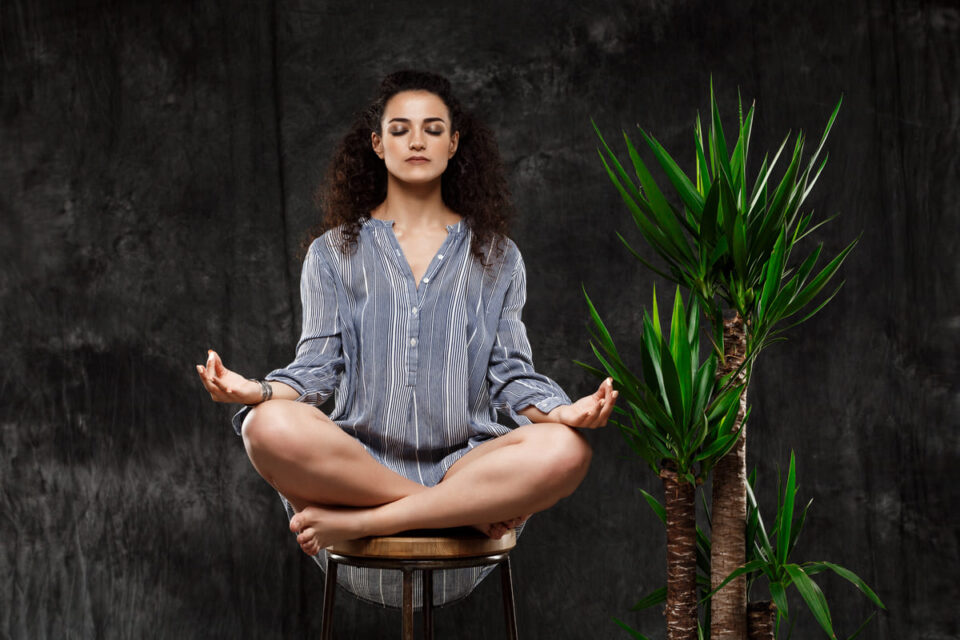The judge who never lost a night’s sleep over her toughest verdicts now lay awake in Bangalore’s predawn darkness, discovering that while she could sentence criminals to life, she couldn’t order her mind to rest.
The same hands that once wielded a gavel now trembled as she described her nightly battle with insomnia. Her pristine silk sari and ramrod-straight posture couldn’t mask the exhaustion in her eyes. The solution, I discovered, wasn’t in the volumes of medical texts lining my walls but in something far older – the rhythm of 4-7-8 breathing. I have treated many cases of anxiety, but watching this pillar of justice learn to find peace in her breath taught me that sometimes, the simplest prescriptions carry the most weight. This is her story.
At 62, she retired after serving 30 years in the city courts. You’d expect retirement to bring relief, but it brought sleepless nights for her. The transition from being a respected judge, handling critical cases daily, to sudden quietude was jarring. Her children, successful professionals, were settled abroad, and her grandchildren were in prestigious boarding schools across India.
“Doctor, I’ve spent my entire life reading case files, making decisions that impacted lives,” she said during our first session. “Now, in the silence of night, all those cases come rushing back. Did I make the right choices? Could I have done better?” Her hands trembled slightly as she spoke, starkly contrasting the firm grip she once held on her gavel.
The symptoms were classic – racing thoughts at bedtime, difficulty falling asleep, waking up multiple times, and daytime fatigue. But what intrigued me was her resistance to medications. “I’ve spent my career advocating for evidence-based decisions,” she said with a wry smile. “I’d like to explore non-pharmacological options first.”
That’s when I introduced her to the 4-7-8 breathing technique, developed by Dr. Andrew Weil but rooted in pranayama, our ancient Indian breathing practices. The method is straightforward: inhale for four counts, hold for seven, and exhale for eight. Recent research published in the Journal of Clinical Medicine (2023) has shown that this pattern triggers parasympathetic activation, reducing cortisol levels by up to 27% within two weeks of regular practice.
Teaching her was amusing. She approached it like a court proceeding, demanding evidence and questioning the mechanism. “So you’re telling me something as simple as breathing can override five decades of mental habits?” she asked sceptically. I shared studies from the National Center for Biotechnology Information showing how controlled breathing patterns can significantly impact the amygdala, our brain’s anxiety centre.
We started with twice-daily practice—morning and bedtime. I encouraged her to maintain a “breathing diary,” which she diligently did, treating it with the same meticulousness she once reserved for case notes. The transformation wasn’t overnight, but it was remarkable.
After three weeks, she reported sleeping through the night for the first time in months. “It’s like having a gavel for my thoughts,” she joked during our follow-up. “When they start getting out of order, I just bring them back with the breath.” Her anxiety scores on the Hamilton Anxiety Rating Scale dropped from 24 to 11.
What fascinated me was how she integrated the technique into her daily routine. She’d practice before her morning filter coffee between reading newspapers and, most importantly, when memories of challenging cases surfaced. A recent meta-analysis in the Indian Journal of Psychiatry supports this approach, showing that consistent breathing practice can reduce anxiety symptoms by up to 45% in individuals over 60.
The technique’s simplicity was its strength. It requires no special equipment or complex procedures—just breath awareness. This simple approach was refreshing for someone who spent decades unravelling complex legal knots. “In court, we often look for complicated solutions to simple problems,” she reflected. Sometimes, the simplest solution is to breathe.”
Three months later, she’s not just sleeping better – thriving. She’s started mentoring young lawyers and, most importantly, teaching them stress management through breathing techniques. “Consider it a judicial precedent for wellness,” she says with a twinkle in her eye.
Her case reinforces what modern research increasingly shows – the power of breath-based interventions in managing anxiety and sleep disorders. A study in the International Journal of Geriatric Psychiatry demonstrated that regular practice of structured breathing techniques could improve sleep quality in 78% of elderly participants within three months.
In my twenty-five years of practice in Bangalore, I’ve learned this truth: anxiety speaks the language of our times. Tech executives meditate between meetings. Judges find peace in ancient breathwork. Startup founders discover solace in Ayurvedic herbs. Harvard’s 2023 study shows that integrated approaches reduce anxiety by 67%.
The judge mastered the law for thirty years.
Then, three numbers mastered her: 4-7-8.
Now, she teaches breath instead of law.
Because some verdicts don’t need words.
Anxiety meets its match not in power but in pause.
In breath.
In peace.
That’s the natural justice.


1 comment
[…] I show them the ‘CEO’s Emergency Kit’ – it’s not a prescription but a simple breathing pattern: 4-7-8. Four seconds to inhale, seven to hold, and eight to exhale. A Silicon Valley-returned techie […]